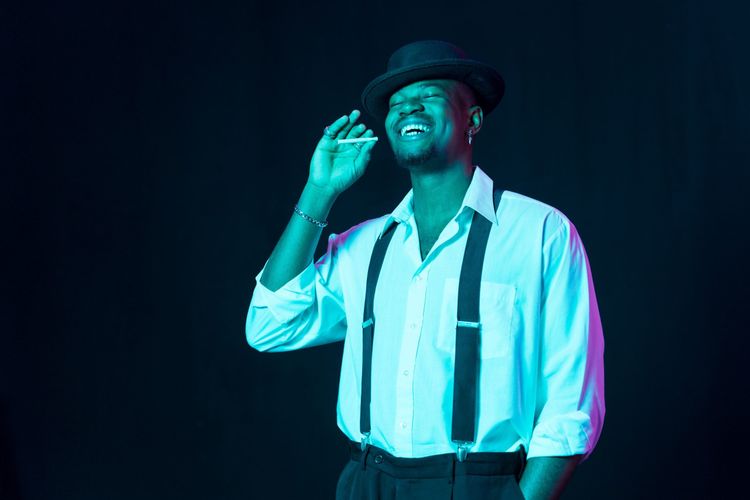How to Escape an OCD Thought Loop

It’s amazing how a person can get lost in their own head. An OCD Thought Loop will do that.
When I was a kid, I developed the strangest obsession. And, no lie, it started after watching an episode of the Simpsons.
Bart made a deal to sell his soul to Milhouse. He sneezed into a plastic bag and Milhouse didn’t say bless you, which according to them, meant Bart’s soul came out of his body and into the bag.
After that, Bart loses his feelings. He doesn’t laugh hysterically as he used to while watching Itchy and Scratchy. He only feels removed, disinterested, and soulless.
For some reason, the idea of losing your feelings terrified me. What if I couldn’t feel anything? What if I could never “get to” my own feelings? What if I was cut off from everything I loved? The OCD “what if” machine started churning.
This preoccupation created a distance between myself and my feelings. I had to “make sure” I could enjoy the things I knew I enjoyed. My obsession was with the quality of my feelings, and my compulsion was to “check” for them.
As you might imagine, this created an enormous amount of suffering that made sense to no one but me.
Typically OCD sufferers focus on external things, like hygiene or symmetry. But my brand was an introvert’s OCD. It was an obsession with the emotional texture and flavor of my internal word. I had created an unsolvable problem. An infinite thought loop.
This is what it’s like to be obsessed with your own feelings. It’s a world of paradoxes, catch-22s, and self overlap.
Ouroboros and The Trap of Getting to Yourself

Ouroboros is an ancient symbol depicting a serpent eating its own tail. Usually, Ouroboros is seen as a cycle of rebirth or infinity. But to me, it is more representative of self-conscious anxiety. It’s the trap of seeking yourself when you’re already yourself. You are chasing a certainty that can never be fully realized.
The more I would try to evaluate my feelings, the more they would run from me because I was the one feeling them. This would fuel my fear, and make me more disconnected from my feelings.
I would go to do something I enjoy, and instead of enjoying it, I was focused on the extent I was enjoying it. This replaced my enjoyment with an anxious “nothing” feeling. So, I wouldn’t enjoy much of anything, unless it was compelling enough to distract me from my obsession.
I couldn’t feel certain about my emotions. I couldn’t grasp them in my hands, so my doubt was never assured. The chase was infinite, just like Ouroboros trying to consume himself.
“What do I do?” I would think to myself. I have a perpetual, unsolvable problem. I would think, “Ok, if I stop caring about my feelings then I will feel them again.” So I would try that, and still, I would be checking my feelings.
How else would I know it worked? Trying to eliminate the obsession, became the obsession. It was the same thing happening on top of itself. This sneaky thought loop was behind every attempt to quell it.
I was in serious trouble, at least in my own head.
Zen and the Art of Leaving Your Mind Alone
I came to realize that I was suffering from a very Zen problem.
Alan Watts, a Zen Buddhist author, was the first person to give me insight into this odd, insidious issue. The more I tried to stop obsessing, the worse the obsession became. The solution and the problem were the same. What do you do about that?
During a lecture about how to quiet an anxious mind, Alan Watts made this remark:
The first rule is don’t try to. Because if you do, you will be like someone trying to make rough water smooth with a flat iron.
Ok, I’d think to myself. So I’ll try to not try. I’ll try to leave my mind alone, then I’ll feel naturally again, then I can feel again, then I’ll feel what I should be feeling. And…damn. I’m trying again. This is just an elaborate, multilayered way of trying when I shouldn’t be trying.
Earned Wisdom and the OCD Thought Loop
It took a lot of time, patience, introspection, and therapy, but I found a way out. After many years of having this obsession wax and wane in my mind, I started taking a new perspective.
“Emotions are something you are, not something you carry.”
That was a realization I had one day. Emotions aren’t something you maintain or grasp. You’re already feeling because you’re already you. When I was afraid that I was feeling “nothing,” I wasn’t feeling nothing. I was feeling afraid.
I can’t arrive at a point where I’ll always feel what I expect to feel, and I never will. This is what frees you. Realizing the futility of what you’re doing.
I realized something else too. It didn’t have anything to do with an anxious thought loop. It was how I was treating myself.
I would disregard my emotions for what I thought I “should” be feeling. It was as if I adopted someone else’s idea of joy, and was trying to force my own feelings to meet that mold.
I was turning my emotions into a performance, and if I failed that performance by not feeling the correct emotion, I would be barred from the joy I was trying to find. It was an elaborate form of performance anxiety, played out with no one looking.
You can see them, be aware of them, and analyze them, but you cannot perform your feelings on cue.
My self-esteem was damaged, which made me ignore my feelings. And my mind was wired for obsession, which created constant doubt that my feelings weren’t enough on their own.
Peace From the OCD Thought Loop
Getting beyond personal obsessions takes time, but it is possible.
For me, it was a process of understanding the absurdity of what I was doing, and letting go of trying to find certainty. I trust my feelings now, and I respect them for being mine, even if I still obsess occasionally. I’ll feel what I feel, and I’ll never have to feel anything more than that.
I can recognize where an OCD thought loop is headed now, and I know well enough not to entertain it. And when they fall away, I arrive back at myself, the place I was searching for the whole time.
You stop being Ouroboros when you stop digging for a solution to the thought loop, and you start accepting yourself as you are. Let the anxiety sit and direct your attention outside your head.
When you learn to stop suffocating in anxious self-consciousness, you have so much more energy to engage with the world and live life how you want. The answer to self-conscious anxiety is self-trust. You don’t have to doubt something you trust is already there.
If I could give Ouroboros one piece of advice, I would tell him to relax. You don’t have to eat yourself to prove you exist.



